Electric Wheelchair Batteries
For individuals who use power wheelchairs and scooters, high-quality wheelchair batteries are essential to ensuring mobility and independence. In addition to the battery currently powering one's chair or scooter, it's a good idea to keep a spare on hand. This offers peace of mind in the event that the current battery malfunctions or unexpectedly reaches the end of its life cycle. Vitality Medical has a variety of wheelchair replacement batteries
Wheelchair Power Pack Purchasing Guide
In recent years, innovations in wheelchair battery technology have led to increased performance. Today's wheelchair batteries are more efficient, longer-lasting, and smaller in size than ever before. Vitality Medical has a variety of high-quality electric wheelchair batteries available for purchase from top-rated brands like MK. Mobility aid users can find a range of battery types and price points to suit their needs.
Types of Electric Power Wheelchair Batteries
Power chairs and scooters run on sealed lead acid (SLA) batteries. There are two main SLA battery types used in wheelchair power packs: AGM (or absorbed glass mat) and deep-cycle gel.
- AGM batteries are recommended for less critical, lighter-duty applications. They tend to be lighter in weight and have a lower initial cost. They also accept a higher charging voltage.
- Deep-cycle gel, such as MK Genuine Gel Batteries, is ideal for heavier-duty applications and recommended for individuals who use their mobility aids daily. Despite the higher initial cost, gel batteries boast a superior lifespan that makes them more cost-efficient in the long run. Users should keep in mind that they are heavier and have more specific charging requirements than AGM.
How To Read a Battery Model
Manufacturers including MK Battery provide battery model numbers in the following format: BCI Group + Battery Type + Country of Origin.
The BCI Group is a number or letter with a number that refers to the battery's physical dimensions. For example, Model M24 SLD G FT illustrates the M24 dimensions and characteristics which means that it's a sealed lead acid, gel, and an inset terminal battery. Not all models provide the country of origin.
Battery Acronyms
- SLD: Sealed Lead Acid
- G: Gel
- AGM: Absorbed Glass Mat
- FT: Insert Terminal
- A: American Made
- M: Imported
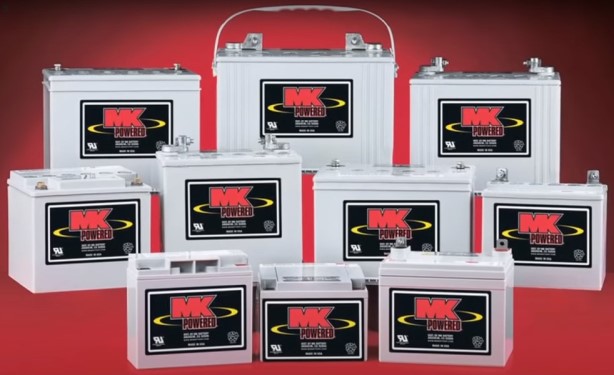

Battery Compatibility
Wheelchair batteries operate on 12 volts, and most wheelchairs run on a 24-volt system that requires two 12-volt batteries. When selecting a battery, both the voltage and the Ampere-Hour (Ah) rating need to be aligned with the requirements of the wheelchair or scooter. Be sure to check that the battery's capacity matches the mobility aid manufacturer's specifications to ensure optimal performance.
Battery Life and Maintenance
Battery life depends upon frequency of use as well as certain maintenance and environmental factors. Lifespan can also vary between manufacturers. Manufacturer MK Battery reports that the average user can expect about two years of life from their battery, while heavy users can expect around 18 months. To maximize this time, users should be sure to follow the manufacturer's best practices for proper charging and storage.
Charging and Storage Tips
The following tips on proper charging and storage can help extend the life of the battery and ensure the best mobility aid performance.
- Charge the Battery Regularly. Daily users who take their mobility device outside the home should charge the battery each night. Occasional users should ensure that they charge the battery when it hits 50%; before outings; and after active use.
- Use the Proper Charger. Always use a charger that's designed for the battery. Be sure to check not only manufacturer compatibility, but voltage and amp compatibility as well.
- Don't Overcharge or Undercharge. Don't disconnect the charger until the battery is completely charged, and avoid leaving the battery on the charger long after it is full.
- Follow Storage Best Practices. Do not store batteries unless they're fully charged. If the mobility device won't be used for more than two weeks, fully charge the battery and disconnect it before storage. Regardless of usage, check battery status once a month and recharge if it falls below 50%. Avoid storing batteries in extreme temperatures.
Safety and Handling
Because wheelchair batteries can be hazardous, it's important to exercise caution and good judgment when handling them. Batteries should be installed by trained wheelchair or scooter technicians who know how to properly perform this job. Follow all manufacturer safety instructions to minimize the risk of explosion, fire, and toxic pollution.
Environmental Considerations
Old batteries cannot simply be thrown away in the trash because they are considered hazardous material. Not only does improper disposal run the risk of causing environmental damage, but it can also lead to fines and prosecution. Fortunately, lead acid batteries are recyclable. Be sure to return used batteries to an approved retailer or agency.
Troubleshooting FAQs
My last battery did not last as long as expected. What can I do to preserve the lifespan of my new battery?
Be sure to follow the instructions from both the battery manufacturer and the mobility aid manufacturer. Avoid leaving the battery drained for extended periods, and avoid overcharging. Store the battery at room temperature in a dry environment, and be especially careful to keep the battery out of extreme heat.
Why is the battery taking longer to charge than it used to?
This could be for a few reasons. Has it been really cold lately? Frigid temperatures can slow down charging times. Another possibility is that there is a loose plug, so double-check the charger and outlet. Finally, slow charging can sometimes be a sign that the battery is reaching the end of its life cycle and will need to be replaced soon.
Why is the battery swollen or bulging?
This can happen for a number of reasons, including manufacturing defects, internal short-circuiting, and more. One common explanation is that the battery has been overcharged or over discharged. It can also happen after overheating or when the wrong voltage is used during charging. Finally, it can be a sign that the battery has reached the end of its natural lifespan
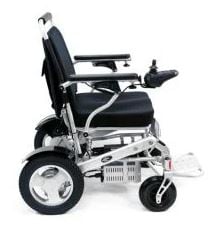
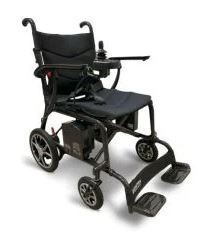
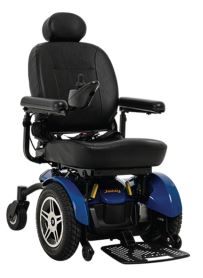
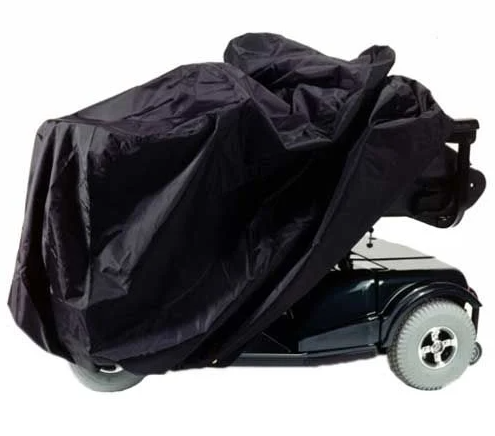

Login and Registration Form